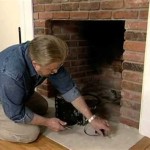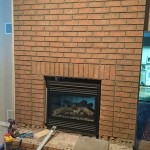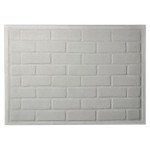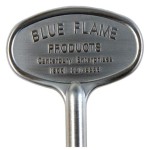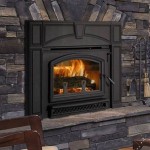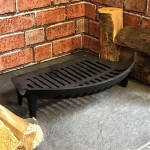Here is an article focusing on fireplace design in living rooms, adhering to your specifications:
Home Design: Fireplace Integration in Living Room Spaces
The fireplace has long served as a focal point in residential design, particularly within the living room. More than just a source of heat, it represents comfort, gathering, and aesthetic appeal. Integrating a fireplace effectively into a living room requires careful consideration of architectural style, spatial arrangement, material selection, and functional needs. This article explores key aspects of fireplace design within the context of modern home interiors.
Architectural Style and Fireplace Design
The architectural style of a home heavily influences the appropriate fireplace design. A traditional home might feature a grand, ornate fireplace constructed from brick or stone, often incorporating a substantial mantelpiece. This style lends itself to a more formal and imposing presence, with details like crown molding, decorative carvings, and elaborate fire screens amplifying the sense of tradition.
Conversely, a contemporary home often benefits from a minimalist approach. Fireplaces in modern settings tend to be sleek and streamlined, utilizing materials such as concrete, steel, or glass. These designs often prioritize clean lines and a lack of ornamentation, allowing the fireplace to blend seamlessly with the surrounding architecture. Linear fireplaces, often set flush with the wall, are a popular choice for contemporary interiors.
Transitional designs bridge the gap between traditional and contemporary styles. These fireplaces might incorporate elements of both, such as a simple stone surround paired with a more streamlined mantel or a traditional brick fireplace painted in a neutral color palette. The goal is to create a balanced and refined aesthetic that complements a variety of interior design schemes.
Furthermore, the location of the fireplace within the room can significantly impact its visual influence. A fireplace centered on a wall creates a natural focal point, drawing the eye and establishing a sense of symmetry. Corner fireplaces, on the other hand, can maximize space and provide a more intimate setting. Consideration of the room's overall layout and traffic flow is crucial when determining the optimal fireplace placement.
Material Selection and Aesthetic Considerations
The choice of materials for a fireplace is a critical aspect of the design process. The materials not only affect the aesthetic appeal but also the overall durability and maintenance of the fireplace. Brick, stone, and concrete are common choices for traditional and rustic designs, offering a sense of permanence and natural texture. These materials are also highly durable and can withstand high temperatures.
For contemporary fireplaces, materials such as steel, glass, and tile are often preferred. Steel provides a sleek and modern look, while glass offers transparency and allows the flames to be the primary focus. Tile offers a wide range of colors, patterns, and textures, allowing for creative expression and customization. The selection of materials should complement the existing decor and color palette of the living room.
Beyond the primary materials, the mantelpiece and hearth also contribute significantly to the overall aesthetic. The mantelpiece can serve as a display area for decorative objects, artwork, and family photos, adding personality and character to the space. The hearth, the area directly in front of the fireplace, provides a protective barrier and can be constructed from a variety of materials, including stone, tile, or brick. The size and shape of the hearth should be proportional to the fireplace and the overall dimensions of the room.
Color plays a crucial role in fireplace design. Neutral colors, such as white, gray, and beige, are versatile and can complement a wide range of interior design styles. Bold colors, such as black, red, or blue, can create a dramatic statement but should be used sparingly to avoid overwhelming the space. The color of the fireplace should be carefully considered in relation to the surrounding walls, flooring, and furniture.
Functional Needs and Technological Advancements
Beyond aesthetics, the functional needs of the fireplace must be addressed. This includes considering the type of fuel source – wood, gas, or electric – and the efficiency of the fireplace. Wood-burning fireplaces offer a traditional ambiance and a natural source of heat, but require a chimney and regular maintenance. Gas fireplaces are more convenient and offer instant heat, while electric fireplaces are the most energy-efficient option and require no venting.
Technological advancements have led to the development of more efficient and user-friendly fireplaces. Remote controls allow for easy temperature adjustment, while programmable thermostats can automate the heating process. Some fireplaces also feature built-in blowers that circulate heat throughout the room, increasing energy efficiency. The incorporation of smart home technology can further enhance the functionality and convenience of the fireplace.
Safety is a paramount concern when designing a fireplace. Adequate ventilation is essential to prevent the buildup of carbon monoxide, particularly with wood-burning and gas fireplaces. Fire-resistant materials should be used in the construction of the fireplace and the surrounding area. A sturdy fire screen or glass door can help prevent sparks and embers from escaping, reducing the risk of fire hazards. Regular maintenance and inspections are crucial to ensure the safe and efficient operation of the fireplace.
Accessibility is also a functional consideration. Ensure that the fireplace controls are easily reached and operated by all users. Clear pathways should be maintained around the fireplace to prevent tripping hazards. For individuals with mobility limitations, consider incorporating features such as raised hearths or accessible control panels.

Fireplace Living Room Family Design Remodel Farm House

Fireplace Design Ideas For Your Home Designcafe

36 Fireplace Decor Ideas Modern Mantel

40 Best Fireplace Décor Ideas Mantel

New This Week 7 Living Rooms With Stylish Fireplace Designs

Unveiling The 63 Best Modern Fireplace Design Ideas In 2024 Living Room With Home

70 Best Fireplace Decor Ideas That Always Look Stylish

Fireplace Interior Design Inspiration From 7 Influencers

4 Stylish New Living Rooms Arranged Around A Fireplace

Unique Great Room Fireplace Ideas For Cold Minnesota Winters
Related Posts


